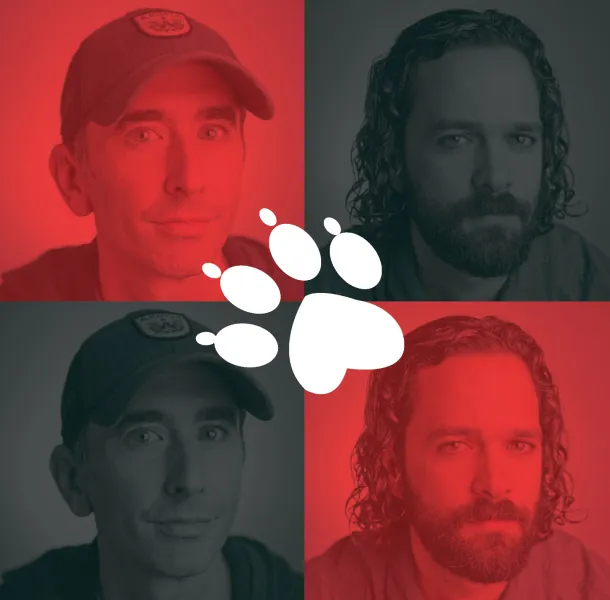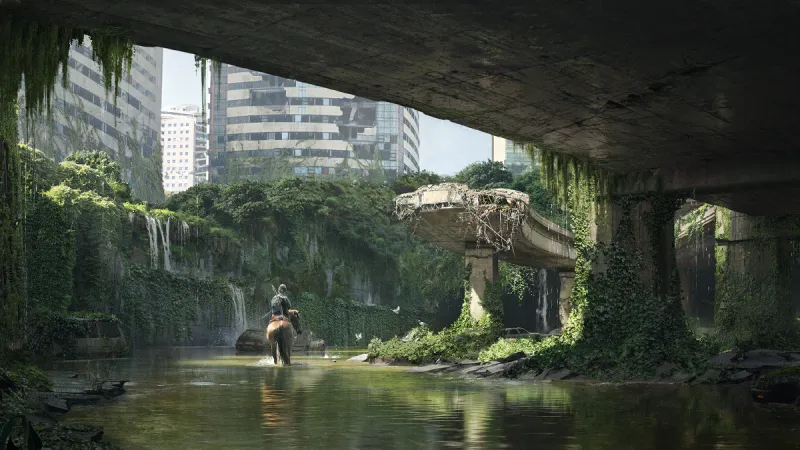
Naughty Dog is one of the most beloved game developers in the industry. Since 1984, the studio has delivered a steady stream of hits, including iconic franchises like Crash Bandicoot, Jak and Daxter, Uncharted, and The Last of Us. But making games isn’t getting any easier, so we sat down with Naughty Dog co-presidents Evan Wells and Neil Druckmann to talk about how they’re shepherding the legacy of the studio, working to combat work crunch, and dealing with harsh criticism.
At first hearing, Naughty Dog can come across as kind of a silly name for a company. It definitely has a legacy now, but do you ever wish you could change the name?
Evan Wells: I love it. I think it’s got a great history at this point. When Jason [Rubin] and Andy [Gavin] founded the company, they were called JAM Software, which was maybe cool back in the ’80s but probably not so cool today. They were about to publish their first game with EA and they went, “There’s already a JAM Software, so you’ve got 24 hours to come up with a new name.” That’s where Naughty Dog came from. I think it works. I like the name, and I wouldn’t want to change it now.
Speaking about that legacy, Naughty Dog has had such an interesting history. It started making kid-friendly platformers and almost every project has gotten more mature. Can you talk about that progression?
Evan Wells: A lot of it comes through our staff maturing but also the industry and the medium maturing. Back when we were making Crash Bandicoot, we couldn’t conceive of making a game like the The Last of Us, it just wasn’t technically achievable. As creators we’ve grown through the years and we’ve progressed with the hardware and actually tried to stay ahead of that curve. With Crash Bandicoot, we had to have a big head with big features just so you could read the character expressions. Then when we move to PS2, we could get more detail we could go more humanoid. With the PS3, we could finally get that subtlety where you have emotion between the lines and really get the subtle facial features. Each hardware production has allowed us to delve into more interesting content.
Neil Druckmann: We have more flexibility now. Now we have the luxury of picking and choosing what style, and what kind of story, and what kind of game we want to create.
 A look inside the Naughty Dog offices
A look inside the Naughty Dog offices
Do you have any desire to go towards lighter fare or return to your roots, to those kid-friendly games?
Evan Wells: If we had endless resources and time it would be super fun to do that. You look at what Insomniac is doing with Ratchet and Clank and it’s exciting. It’s great to see that stuff. We’re just limited with time, you know, I’m 48 years-old and how many more games do you get to make, so you got to pick and choose.
Neil Druckmann: Once we finish a project, we spend quite a bit of time entertaining all sorts of different directions, whether it’s going to be something new or if we’re going back to some old franchise. We really take our time with it, and if you were to see our folders of concept art you’d see unused concepts that are all over the gamut. Then we look at everything and we ask ourselves what are we excited by? What’s something that’s going to challenge us and push us, and push the medium as far as games that can be? Because that inspiration is so important to carry through years of production.
A lot of fans have this perception of Naughty Dog as this crown jewel in Sony’s cap, like the best of the best in the development world. Do you see yourselves that way?
Evan Wells: That’s a big question. We just try to make games that excite us. We try to make games that are going to be fun to play and received well by our fans, and rewarding for the team to create. We’re not really driven by any pressure from Sony to do anything in particular.
Neil Druckmann: To steal a term from someone, our brand is excellence and people come to Naughty Dog to achieve excellence and we give ourselves the pressure of living up to the kinds of games people expect from us.
You’ve said that you look up to studios like Insomniac, Guerrilla Games, and Sony Santa Monica. What specifically do you see them doing that inspires you?
Neil Druckmann: It might be some particular tech like what Guerrilla was able to achieve with how dense their foliage is. We looked at that, and we talked to them about that.
Evan Wells: You always come out with something that you could do better, even if it’s not something you adopt directly. So many times you’re brainstorming something in the office with your colleagues, and you look at something like, “Yeah, that’s just gonna be too hard to implement. We can’t go down that road.” And then you go talk to another studio, and you see that they’ve done that very thing or something very similar and you’re like, “Oh my God!” And then they talk about how it’s paid off, and you’re instantly inspired.
 The Last of Us Part II concept art
The Last of Us Part II concept art
Do you have any specific examples of that?
Evan Wells: Very early on in The Last of Us Part II development, we knew that it was taking places in Seattle, and we knew that Sucker Punch had completely modeled Seattle for Infamous Second Son. We said, “We’re not going to use the assets in the game, but we want to quickly feel out the space, so can we get access to those assets?” And they said, “Sure,” and sent it over. We were able to quickly rough out the environment. That was a huge help.
Neil Druckmann: Another thing that comes to mind when we were talking to Sucker Punch is that we were talking about mo-capping a horse for The Last of Us Part II, and we were looking for ways to do it, and they were like, “Oh, we’re about to do the same thing [for Ghost of Tsushima]. Let’s double up our efforts.” Motion capture for a big animal is a big deal, and we were able to just approach the problem together and use similar data, sometimes the same data for both games.
I wouldn’t have even thought about mo-capping a horse. That’s crazy that you did that.
Neil Druckmann: We also mo-capped dogs, and then there’s a sheep sequence in The Last of Us Part II, and that’s actually dogs acting like sheep.
Naughty Dog has such a proven track record, but that hasn’t come without cost. Over the years, you’ve come under fire for studio crunch. Could you speak to your personal experience with crunch and how that’s affected the studio?
Evan Wells: I have definitely personally worked very hard over the years. I think some of that has helped me get to where I am in my career. As a studio, we’ve all worked hard together, and we are working very hard on every project to find the right balance, just like we do in all of our technical aspects of creating a game. We have post mortems and we look at how the animation went and we look at how the design went and we dig really deep into all the things that could have been better and the things we got right. We do the same thing with production. We look at how the whole game was created, and where we can make improvements and how we can strike the right balance between giving people the opportunity to – as I mentioned earlier – leave their mark on the industry and advance their craft in ways that have never been achieved, but also find space along that spectrum.
Neil Druckmann: We have so many talented people that are good at solving problems, whether they’re creative or technical. Let me go back to The Last of Us Part II; some pillars that were important to us were diversity, diversity in the people we hire and the characters that we have in our game as well as accessibility and how do we make our games more accessible. Likewise, we’re looking at quality of life for preventing burnout, to employ the brain power we have in our studio, and we started coming up with working groups to talk about the areas in the studio where we can improve. We worked a particular way when we’re 40 people, now we have to evolve as we keep growing.
Evan Wells: Something else that we’re really focused on is increasing the level of management at the studio. We have more directors and more leads, all with the end goal of giving the entire team more opportunities to provide feedback and check in on their well-being.
